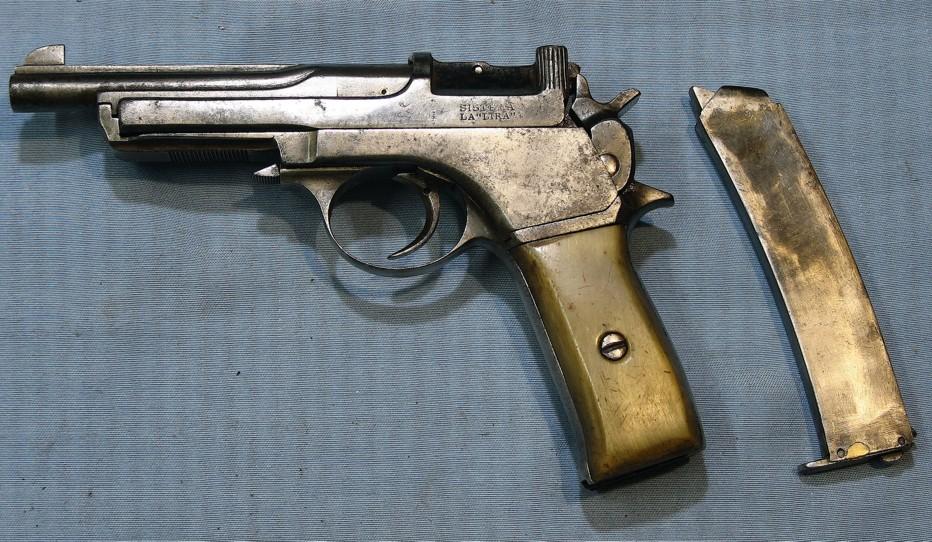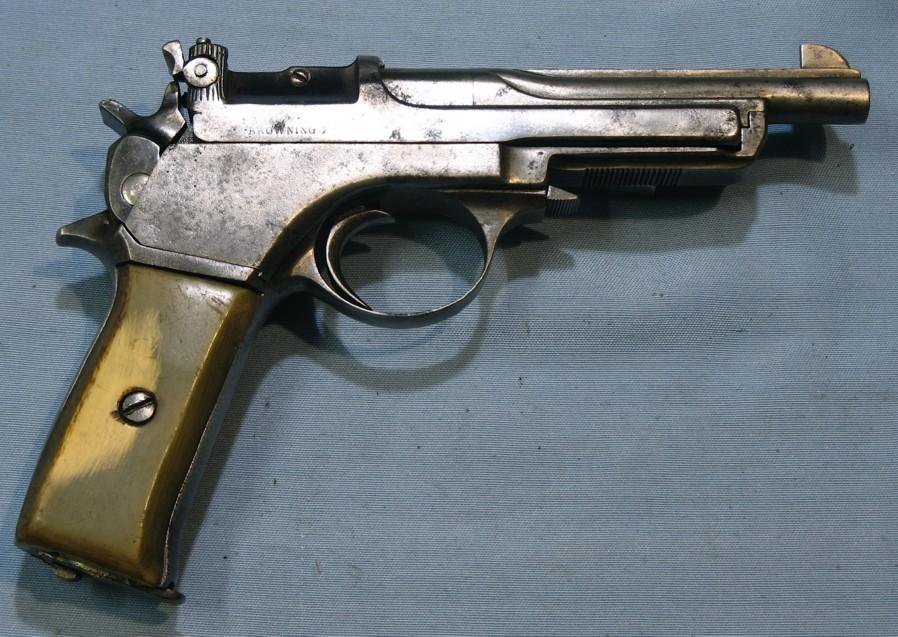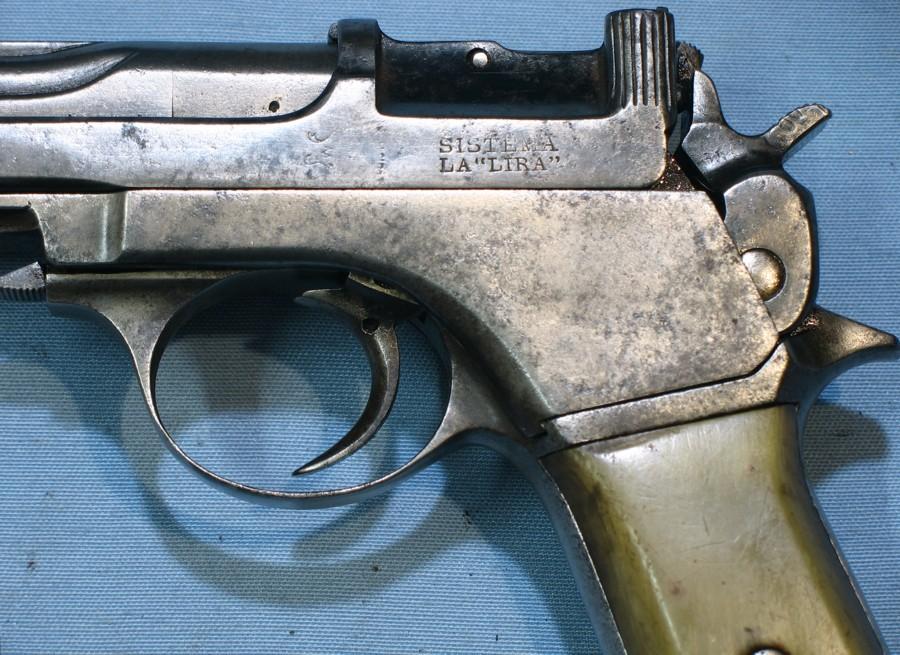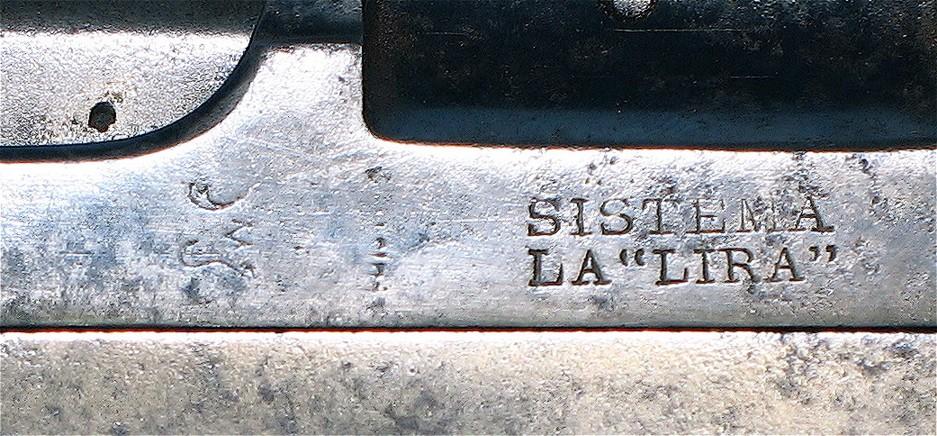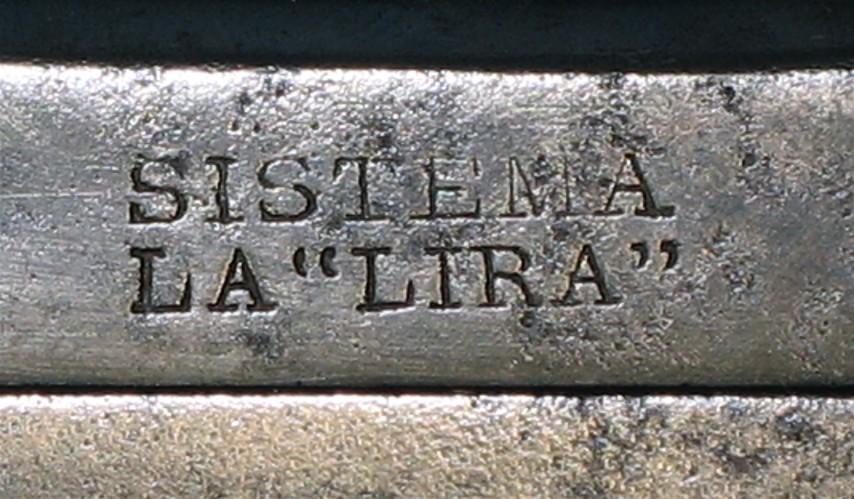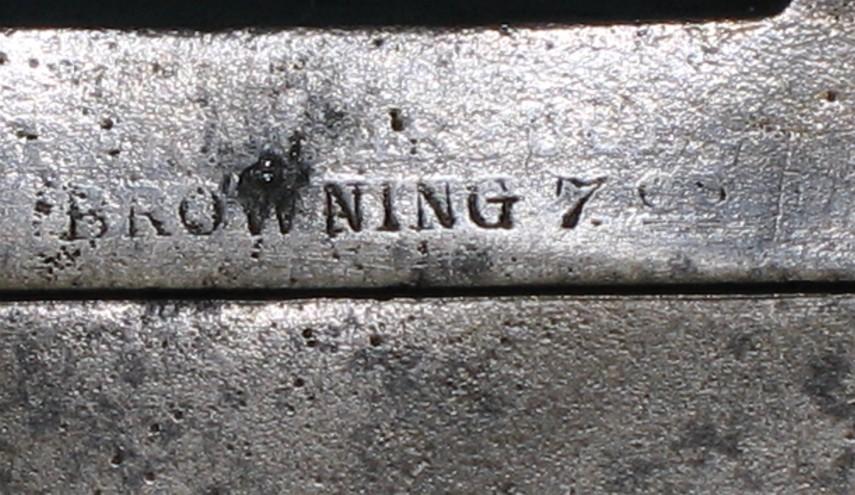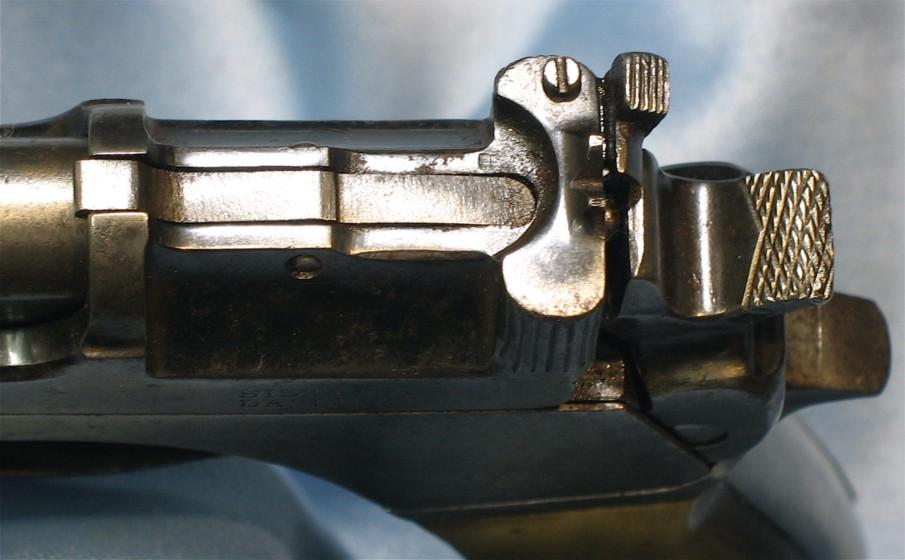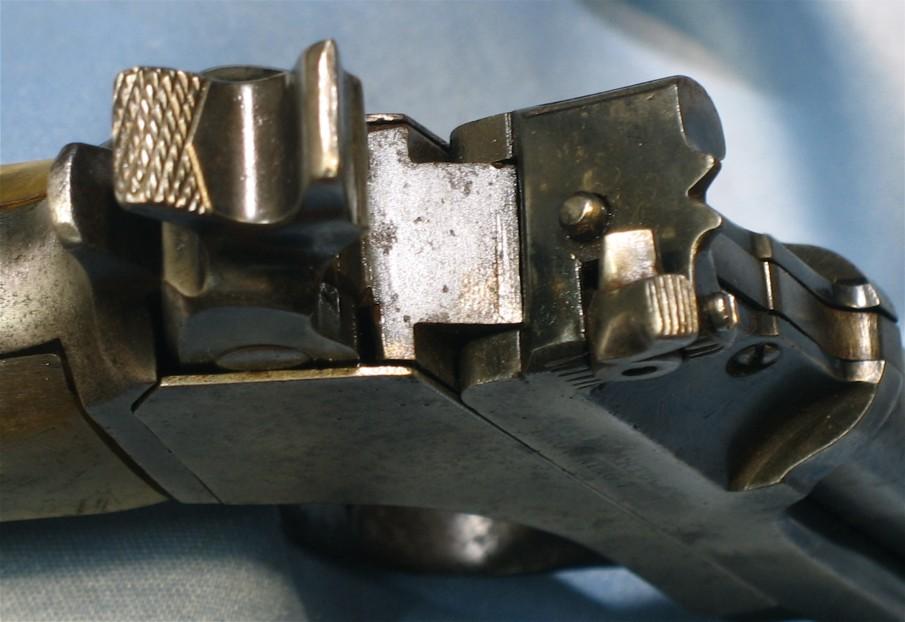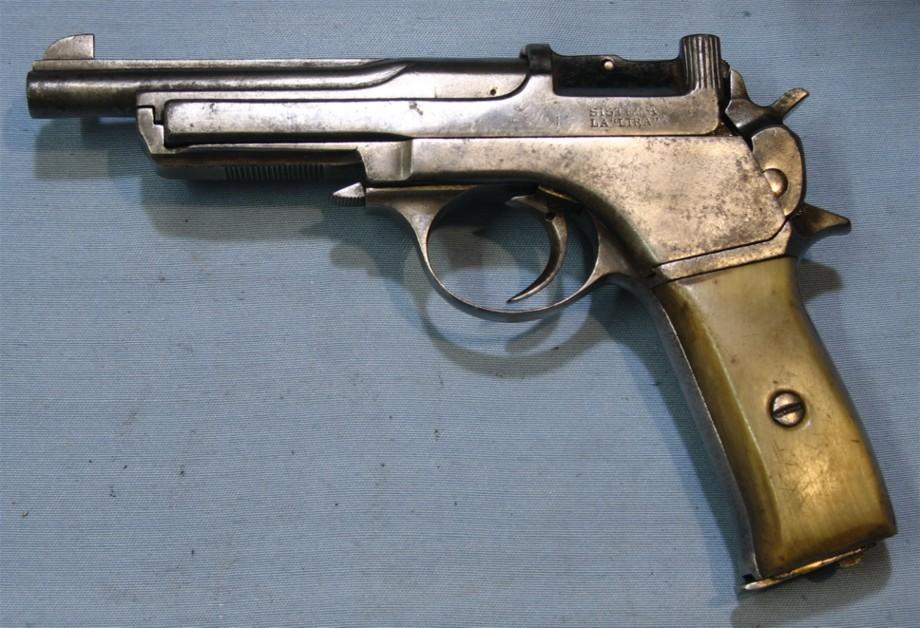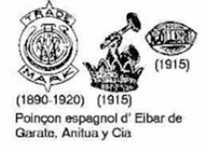
Garate Anitua Y Cia
During the early years of the 20th century, the brilliant
John Moses Browning designed what would become the basis for modern
semi-automatic pocket pistols: the M1903 for the Belgian firm FN Herstal. The
rapid success of this design signaled the decline of small pinfire, rimfire, and
centerfire revolvers and pepperbox pistols. This commercial and technological
triumph prompted international competitors to produce numerous clones of the
Browning, some closer to the original than others. Many gunsmiths in Germany,
France, England, Belgium, and especially Spain flooded the European pocket
pistol market with these small pistols in 7.65mm or 6.35mm calibers.
The pistol presented here belongs to this constellation
of Browning interpretations. The name "Teuf Teuf" is a generic term particularly
favored by the craftsmen of Eibar, Spain, where this pistol originated. "Teuf
Teuf" pistols can be found, notably, at Ruby and Charita y Anuela. This one is
nickel-plated and has synthetic (bakelite?) grips and a safety.
Markings:
Left side of the slide:
AUTOMATIC
"TEUF-TEUF" SYNDICIANS PATENTED MODEL No. 2 SUPERIOR
Left side of the frame:
Arrow with fletching
P.V. (for
smokeless powder?)
Letter X
Logo depicting an eagle
Right side of the slide and frame:
Letters AN under a crown, deactivation mark from the St.
Étienne proof house before April 8, 2016 (date of the European regulation).
Right side of the frame:
Capital letter N. This could be the Spanish proof house's control mark, in which
case the weapon would have been reproofed in 1942 (subject to very strong
reservations). An example with identical markings is described by the Imperial
War Museums at the following link:
https://www.iwm.org.uk/collections/item/object/30031303
It specifies that the magazine holds 8 rounds of 7.65 mm
caliber ammunition. This institution attributes the pistol to Arizmendi y
Goenaga. However, one clue points to another source: the logo on the grips
features the inscription "Trade Mark" and a monogram combining the letters G, A,
and C, which is attributed to the firm Gárate, Anitua y Cía from 1890 to 1920.
Another pistol bearing this
logo can be found on the website:
http://littlegun.be/arme%20belge/copie%20belge/a%20copies%20belges%20garate%20fr.htm
In conclusion, this semi-automatic pistol
from the "Teuf Teuf" family, chambered in 7.65 mm, was produced in Eibar by the
firm Gárate, Anitua y Cía during the first quarter of the 20th century.
Chris, HPH

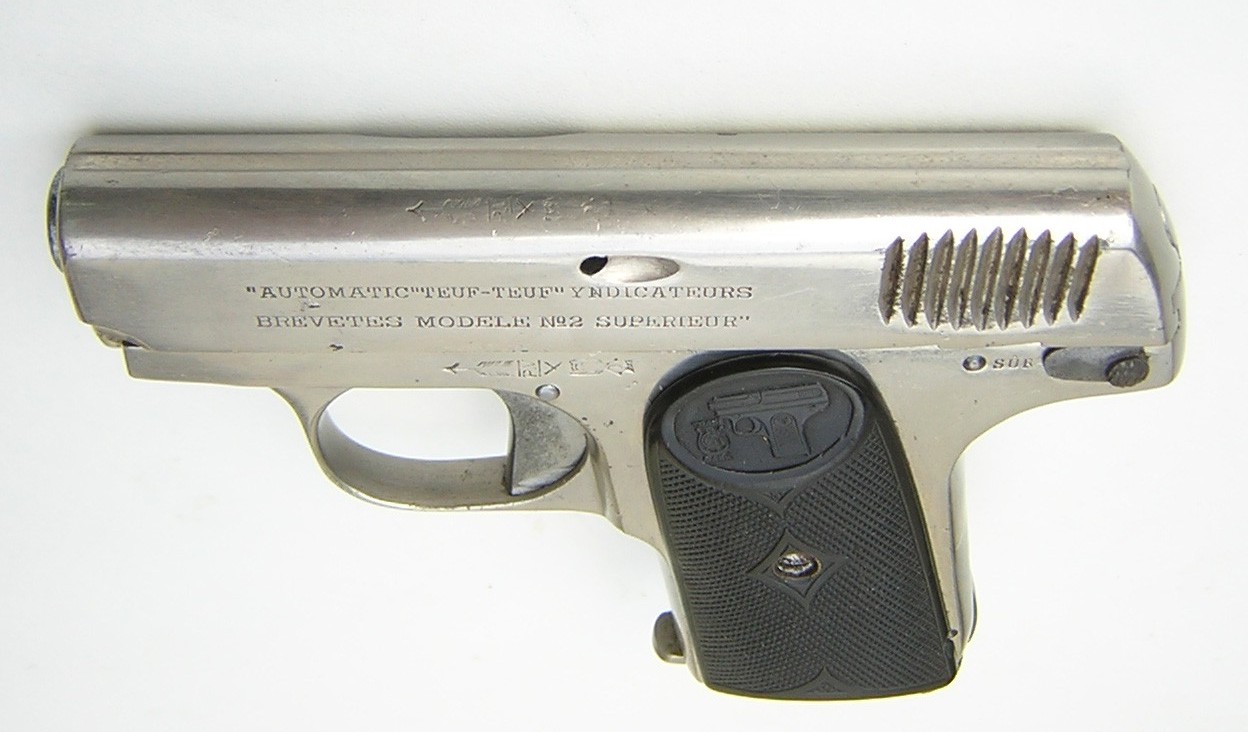
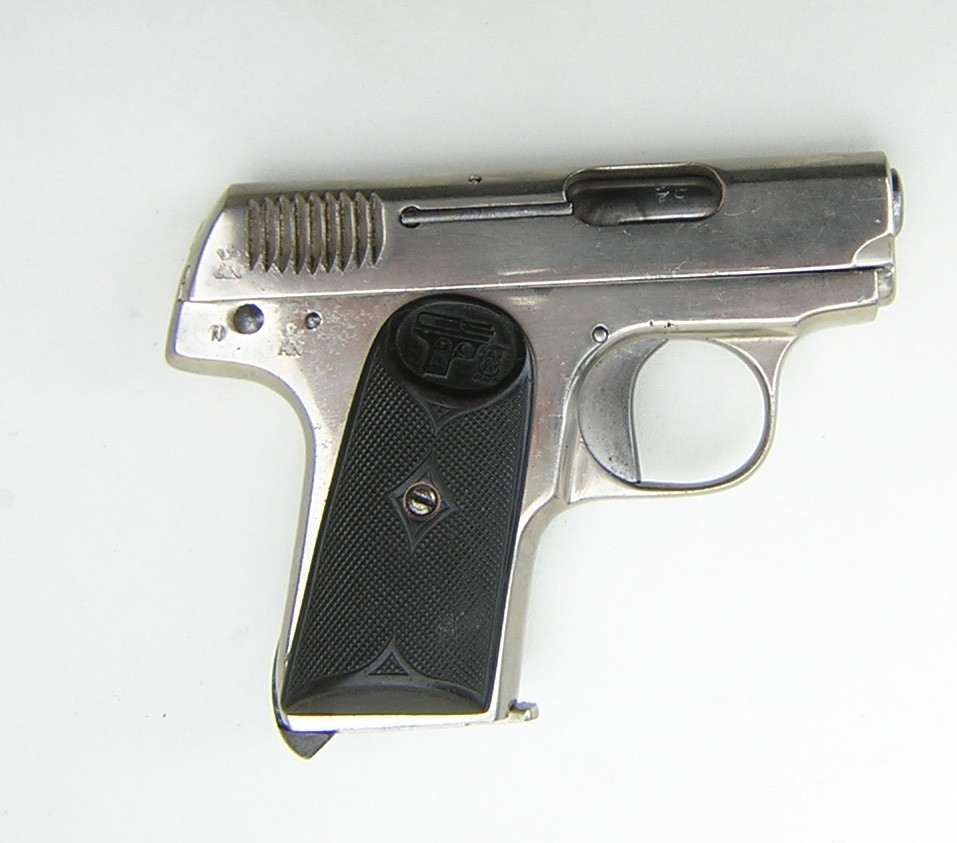

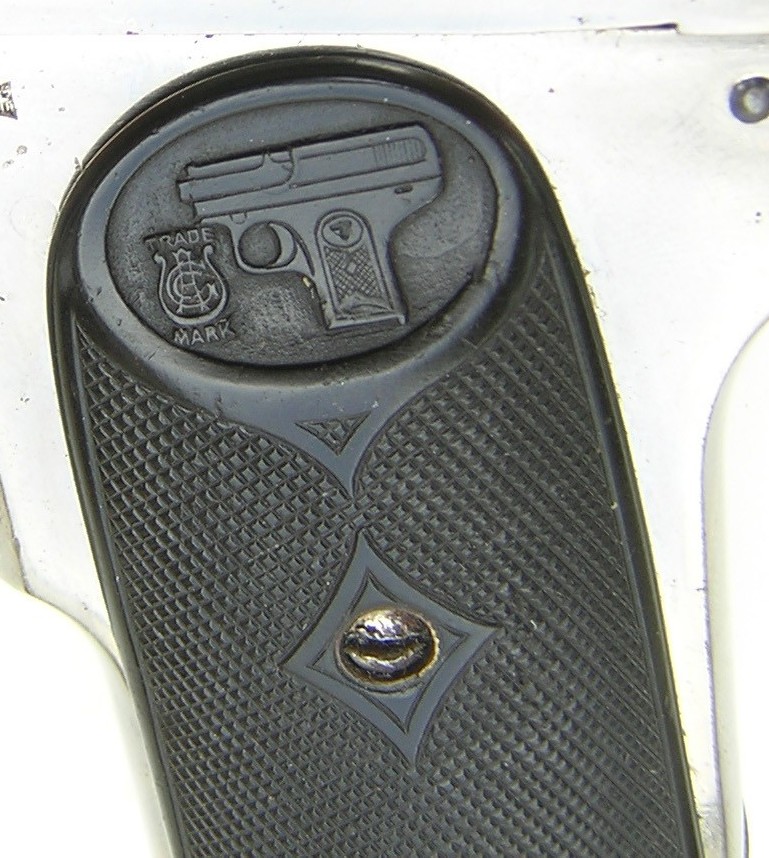





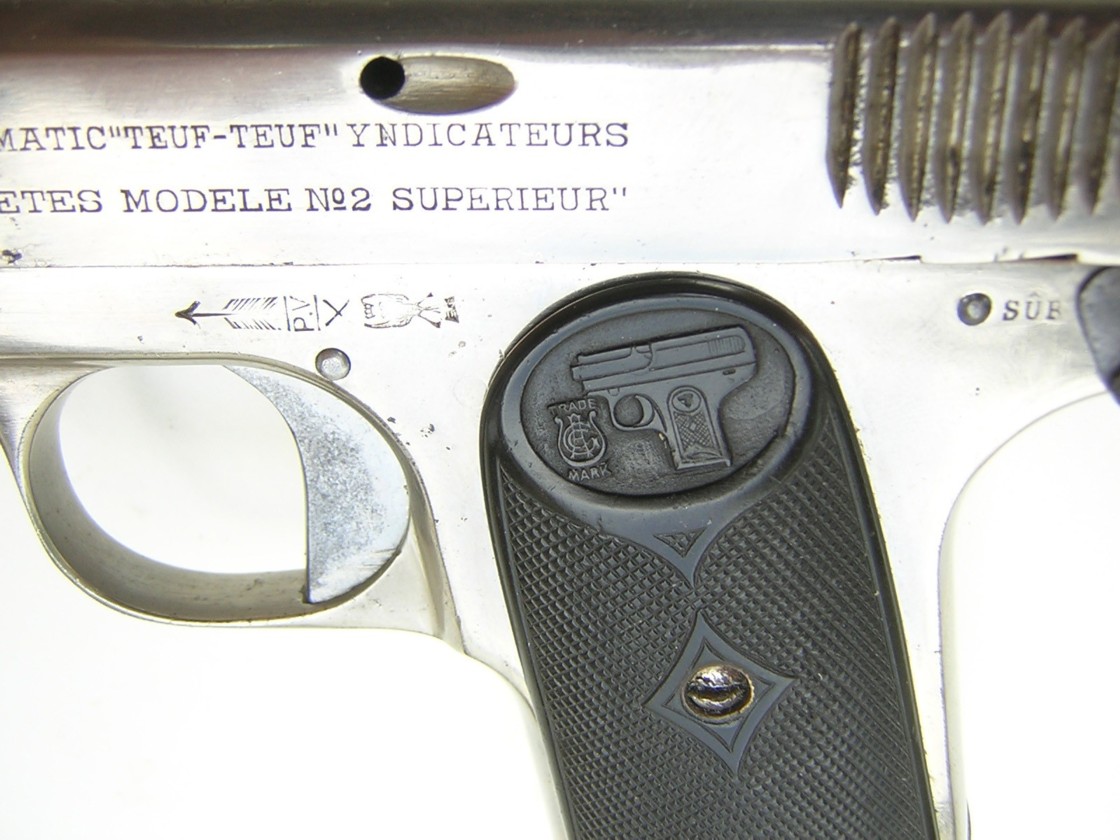

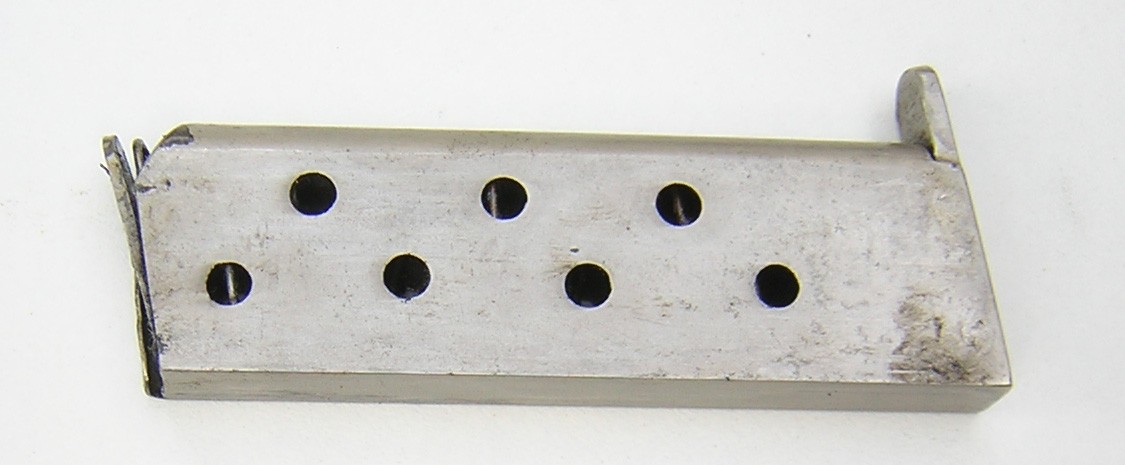
Garate Anitua Y Cia
Photos Littlegun
Garate Anitua Y Cia
Photos Littlegun
Anitua Garate
I found this pistol right before leaving Uruguay so I only took some quick pictures. I did not measure the barrel or look for marks, etc. But, as I mentioned, the book by Gangarosa says that this was an improvement over the Mannlicher because it was chambered for the Browning 32 ACP and because it had a detachable clip. This is an earlier model of the Unceta La Lira because the magazine release button is on the magazine itself. It has replacement grips made of horn, but is still in fairly good shape.
As I wrote earlier:
this is a Garate Anitua copy of the Steyr Mannlicher 1905 pistol in 7.65 Browning (32ACP) called La Lira. I was not aware that such a pistol existed but has now found reference to it in the book "Spanish Handguns" by Gene Gargarosa. Evidently it was made about 1910-1914 and unlike the original Mannlicher this pistol has a removable ammunition clip.
Richard
